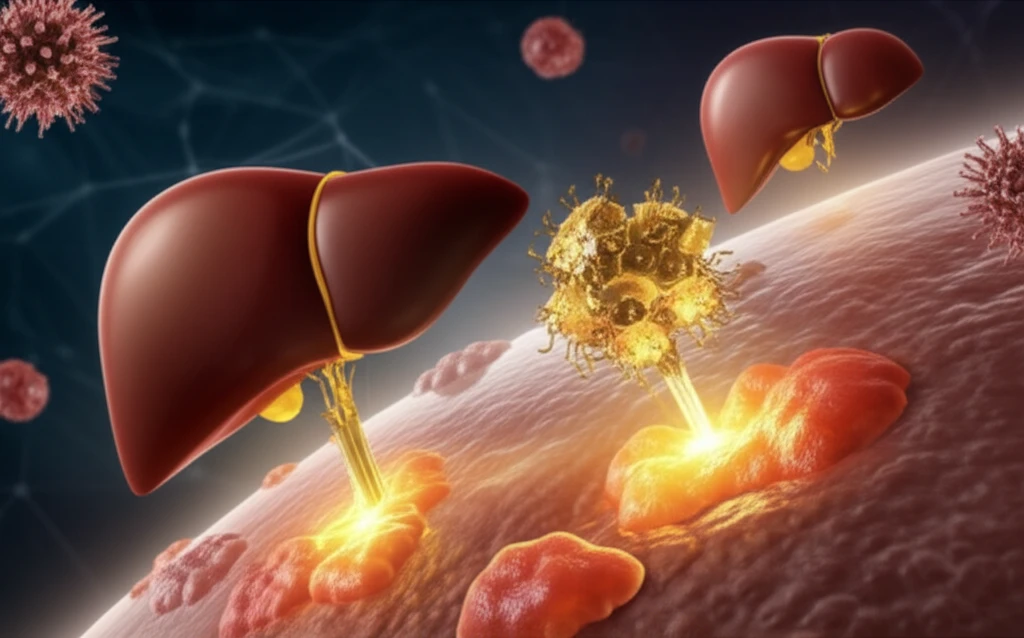
Cancer Breakthrough: New Hope in the Fight Against Liver Cancer
"Groundbreaking research reveals potential new treatments that may revolutionize the fight against liver cancer, offering hope to millions."
Liver cancer, a formidable foe, has long challenged medical science. But in a beacon of hope, recent research has unveiled promising new avenues for treatment. These advancements are not merely incremental; they signal a potential paradigm shift in how we approach this devastating disease. This is a journey into the heart of groundbreaking science.
The core of this story lies in innovative therapies that show great promise in the fight against liver cancer. These treatments could revolutionize how we manage and combat the disease. The aim is not only to extend life but also to dramatically improve the quality of life for those affected. We are going to explore the latest discoveries, understand the science behind them, and explore their potential impact.
We will delve into the complexities of liver cancer, examine the mechanisms of new treatments, and explore what these discoveries could mean for the millions affected globally. The intent is to offer a clear, accessible explanation of the scientific breakthroughs, highlighting their relevance to your health, and to provide an optimistic perspective on the future of liver cancer treatment.
Unveiling the Science: A Deeper Dive into Liver Cancer and the New Treatments

To appreciate the significance of the latest breakthroughs, it's essential to understand liver cancer. Hepatocellular carcinoma (HCC), the most common form, is often linked to chronic liver diseases like hepatitis and cirrhosis. Its prevalence is a global concern, and its impact is profound, affecting not only those diagnosed but also their families and communities.
- Molecular Mechanisms: The focus is on molecules called aquaporins (AQPs), specifically AQP3 and AQP9, which play roles in cancer cell behavior.
- Impact of Auphen and dbcAMP: The study investigates the effect of Auphen and dbcAMP, observing their impact on AQP3 and AQP9 levels, and how this affects tumor growth.
- In Vivo Experiments: The research involves experiments in living organisms (in vivo) to assess the effectiveness of these treatments.
- Observed Outcomes: Results include decreased tumor volumes, weights, and changes in the levels of proteins related to cancer spread.
The Road Ahead: Hope for a Brighter Future
The latest discoveries in liver cancer treatment are just the beginning. With ongoing research and the refinement of new treatments, the future for those facing this challenge is filled with greater hope than ever. These advancements not only offer potential cures but also enhance the quality of life for patients, providing them with new optimism. Together, we can support this ongoing scientific journey and look forward to further advances.
